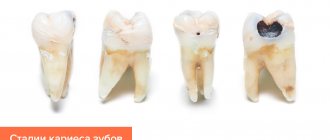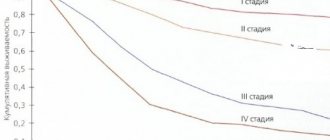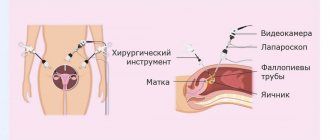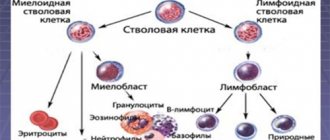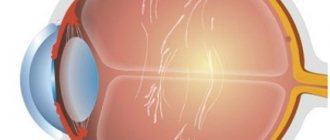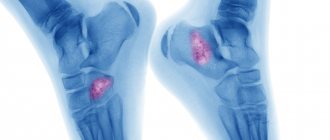In medicine, tumor markers are understood as a combination of biochemical substances and elements, the increase of which in the human body shows and signals a malignant, benign neoplasm or the presence of an inflammatory process. The body responds to the appearance of cancer cells by increasing the production of tumor markers. The person does not suspect that pathological processes are developing in the body, the onset of the disease is asymptomatic or the signs are not paid attention to. Detection of symptoms of a disease at the stage of its occurrence is often a matter of chance and depends entirely on the attentiveness of the patient and the therapist. The doctor’s task is to promptly identify possible deviations in the internal environment of the body in the early stages through examination, analyzes and tests.
The HE-4 tumor marker is a protein belonging to the family of human acidic tetradisulfide proteins. In the normal state, the protein is present in the organs of the genitourinary system, pancreas and upper respiratory tract. Present in men and women. The functional load of the HE-4 marker has not been fully studied. Scientists suggest that the marker is involved in the normal functioning of the epithelium and supports the functioning of the local immunity of the oral cavity and respiratory tract. Increased production of HE-4 is a feature of some types of cancer cells, which makes it possible to use it as a tumor marker. Researchers have found another property of HE-4 - enhancing the movement and adhesion of ovarian cancer cells. Therefore, it is advisable to use the marker for diagnostic and prognostic purposes for ovarian and endometrial tumors.
Stages of development of ovarian cancer
general characteristics
HE4 belongs to the proteinase inhibitor family and its likely function is to inhibit trypsin. HE4 was first identified in the epithelium of the distal appendages. Its increased production was detected in ovarian cancer and endometrial cancer, and rarely in the common form of lung adenocarcinoma. It is important that in patients with benign gynecological diseases, endometriosis, and ovarian cysts, there is no increase in HE4. Overexpression of the marker is detected already in the early stages of ovarian tumor development. Studies have shown that the HE4 level can be elevated already at the preclinical stage of epithelial ovarian cancer and the combined determination of two markers (CA125 and HE4) significantly increases the diagnostic value of the test for the early diagnosis of epithelial ovarian cancer, as well as for the differential diagnosis of benign and malignant pelvic tumors. HE4 can be used to monitor the effectiveness of ovarian cancer therapy. An increase in HE4 concentration by at least 20-25% compared to the previous test result indicates progression of the disease. Certain histological types of ovarian cancer, mucinous tumors or gonocytomas, rarely express HE4, so the use of the HE4 assay is not recommended for monitoring patients with a known mucinous tumor or gonocytoma.
Tumor marker NOT 4
Early diagnosis of cancer is the most important task of oncological disciplines. The earlier the pathology is detected, the higher the likelihood of not just surviving, but defeating the disease. The HE 4 tumor marker test helps diagnose ovarian tumors, and subsequently monitor the effectiveness of their treatment.
Description of marker NOT 4
Tumor marker HE 4 is human epididymal protein 4 (humanepididymisprotein 4). It is secreted by the reproductive organs of men and women, as well as by the epithelium of the pancreas and lung tissue. Its main role is participation in spermatogenesis. And in oncology it is used for early diagnosis of epithelial ovarian cancer. When cancer cells begin to rapidly divide, forming a tumor, the number of different proteins that can serve as tumor markers increases. There are specific proteins that can be used to determine the exact location of the malignant process. And there are nonspecific ones, which can increase with cancer of any organ. If ovarian cancer is suspected, the level of tumor marker HE 4 must be determined.
Reliability of results
Tumor marker HE 4 is very sensitive. Its level increases from the earliest stages of development of epithelial ovarian cancer. The reliability of the results is 95-97%, while that of CA 125 (a cancer antigen also used to diagnose ovarian cancer) is no more than 80%. CA 125 can also increase during other, non-oncological processes (benign tumors, endometriosis, even hormonal fluctuations depending on the menstrual cycle). While tumor marker HE 4 increases significantly only in the presence of a malignant process.
A slight upward shift can be caused by the following non-cancerous diseases:
• Ovarian cyst; • Myoma or fibroid of the uterus (benign tumor); • Kidney failure; • Pathologies of the liver and pancreas; • Cystic fibrosis; • Inflammation of lung tissue.
In addition to early diagnosis of cancer, analysis of the HE 4 tumor marker is used to monitor the effectiveness of treatment and timely detection of metastases or relapses.
Indications for analysis
Young healthy people do not simply need to test for the HE 4 tumor marker if they wish.
Doctors prescribe this test for the following indications: • Pain in the lower abdomen, lower back; • Menstrual irregularities; • Spotting outside of menstruation; • Rapid weight loss while maintaining your usual diet; • Lethargy, weakness, apathy, fatigue.
The following categories of people need to regularly conduct HE 4 tests, even without the presence of suspicious symptoms:
• Age over 40 years. You can donate blood once to determine your initial level. And then carry out this test every 2-3 years to control it; • Age over 40 years and presence of relatives with cancer (of any organs). In this case, annual determination of the tumor marker would be justified; • In the presence of chronic pathology of the reproductive organs (endometriosis, fibroids, ovarian cysts) - to exclude their malignant degeneration; • Women working in hazardous chemical industries, in X-ray rooms, nuclear power plants; • For patients who have already undergone surgical treatment and undergoing antitumor therapy - the first year every 3 months, the second year - every 6 months, and then once a year. How to donate blood?
To increase the reliability of the results, it is necessary to prepare for donating blood. There are a few simple, generally accepted rules:
• The material is taken on an empty stomach, in the first half of the day; • Dinner should be light, without fatty, spicy, smoked foods; • A few days before donating blood, it is important to give up alcohol; • You should not smoke on the day of the study; • Two days before the procedure, you should avoid sexual intercourse; • It is advisable to stop taking any medications three days in advance (under the supervision of a doctor). If this is not possible, then you need to warn about taking medications before donating blood; • Do not overload yourself with physical activity, visit saunas and solariums, or be exposed to stress a few days before your visit to the clinic; • For women, it is best to take the HE 4 tumor marker three to five days after the end of menstruation.
Decoding the results
Only a doctor should interpret the results of HE 4. Despite the standards for various blood parameters posted on the Internet, it is worth remembering that the results may differ depending on the equipment and reagents in different laboratories. The interpretation should be based not only on numbers, but also on the medical history, the patient’s complaints, and data from other studies.
On average, the following standards are recognized for the HE 4 tumor marker:
• Women under 40 years of age – up to 70 Pmol/l; • From 40 years to menopause – 80-104 Pmol/l; • During menopause – no higher than 140 Pmol/l; • In young men – up to 4 ng/ml; • In men over 60 years of age – up to 6.5 ng/ml.
What to do if tumor marker NOT 4 is elevated?
The main thing is not to panic and not diagnose yourself with cancer in absentia. In case of suspicious results, the doctor will prescribe a repeat analysis, as well as a comprehensive examination using ultrasound, elastography, possibly MRI and biopsy. Only after a full diagnosis will it be possible to make a verdict and think about treatment.
Where is the best place to donate blood?
In our clinic you can undergo full diagnostics and treatment. You don’t have to travel to different parts of the city to donate blood, do an ultrasound there, and get a consultation there. We use high-precision equipment and high-quality reagents, and therefore guarantee the reliability of the results. Qualified, polite staff, no queues, comfortable environment, professional psychological support - and all this at very affordable prices.
Indications
Tumor marker HE-4 is not one of the mandatory tests for patients, and can be prescribed only if there are certain complaints. Blood tests for HE-4 tumor markers are indicated when patients complain of:
- the occurrence of pain in the pelvic area and appendages;
- disruptions in the menstrual cycle;
- sudden weight loss and loss of appetite;
- a sharp deterioration in health.
Another indication for performing a blood test for HE-4 markers is to assess the risk of cancer in a woman during menopause, as well as in patients at high risk of morbidity:
- with the presence of chronic pathological disorders of the pelvic organs;
- with a genetic predisposition to the disease;
- employees of hazardous industries.
When asked whether it is worth getting tested for the HE-4 tumor marker, the gynecologist will answer only after interviewing and examining the patient. When no increase in marker levels is detected in the blood, this indicates the absence of malignant tumors. Otherwise, specialists detect an increase in tumor markers, and additional studies may be prescribed for a more accurate diagnosis. The doctor must prescribe treatment based on the stage of development of the pathological process, its nature and the general health of the patient.
Decoding the results
After the study, the results of the HE-4 tumor marker test are usually ready within two days. A good indicator is a reduced number of HE-4 tumor markers in a blood test, which means the absence of malignant tumors.
After conducting a study for the HE-4 tumor marker, the data obtained should be deciphered only by a qualified specialist, taking into account the patient’s age group.
Norm
The HE-4 marker can be detected in the blood of absolutely all women. The optimal HE-4 norms are calculated based on the patient’s age category. During childbearing age, this norm in women should not exceed 70 pmol/l, but after menopause its level can reach up to 140 pmol/l. An accurate diagnosis cannot be made based solely on elevated values, but this indicates the need for additional research.
Deviations
When specialists detect a deviation from the norm in the blood in the form of an increase in the number of HE-4 tumor markers, patients are prescribed the following diagnostic measures:
- ultrasound examination (ultrasound);
- magnetic resonance imaging (MRI);
- computed tomography (CT);
- radiography.
After analyzing the marker level, the results do not provide a basis for making an accurate diagnosis. All these values can only indicate the need to conduct a full examination.
Deciphering the analyzes of already adult women, a decrease in indicators is not provided; additional diagnostic measures are prescribed only if an increase in the number of markers is detected. More accurate diagnosis requires the combined use of blood tests for tumor markers HE-4 and CA 125.
Interpretation of analyzes
The interpretation of the result is based on the possibility of increasing the threshold value of the HE-4 marker in other diseases, including lung cancer, renal failure, and renal fibrosis. According to researchers in the field of cancer diagnostics, the phase of the menstrual cycle does not affect the level of HE-4. If the level of tumor marker HE-4 is below normal, this is not critical. Increased indicators require attention, which may indicate the presence of pathological processes in a woman’s body.
Norm
Women have the tumor marker HE-4 in their blood. The normal amount depends on the age of the patient. The norm for women under 40 years of age is within 60 picomoles per liter. During the onset of menopause, the normal value should not exceed 140 picomoles, according to other sources, 104 picomoles. The marker value in pregnant patients is lower than in non-pregnant patients.
Table of indicators of normal levels of tumor marker HE-4 in women:
| Age, years | Norm, picomole |
| Up to 40 | No more than 60 |
| 40 – 49 | No more than 76 |
| 50 – 59 | No more than 74 |
| 60 – 69 | No more than 83 |
| After 70 | No more than 104 |
Deviations
An unambiguous diagnosis of the presence of the disease is made by the attending physician based on the results of a number of additional diagnostic procedures and studying the patient’s comprehensive medical history. After conducting diagnostic studies and confirming the positive dynamics of cancer cell growth, doctors develop an individual strategy to combat the disease. The main treatment for cancer is chemotherapy. If a positive effect is not achieved, surgical intervention and postoperative rehabilitation therapy are used. After the indicators return to normal, regular preventive examinations are carried out to monitor the level of the HE-4 tumor marker and other indicators.
Diagnostic errors
As in any other field, in diagnostic medicine there can be inaccuracies, inaccuracies and errors. The possibility of false-positive and false-negative results cannot be ruled out due to technical failures in diagnostic equipment, non-compliance with requirements when preparing for tests, or an error by a laboratory technician or diagnostician.
Preventive actions
In order to minimize the risk of ovarian cancer, the following rules must be observed:
- Periodic examinations by gynecologists.
- Regular blood donation for analysis (general, biochemistry). This procedure is also indicated for people undergoing rehabilitation for ovarian cysts.
- Maintaining genital hygiene.
- Taking hormonal and contraceptive medications only after consultation with a therapist.
- In winter, choose a wardrobe with warm clothes, and not for the sake of fashion. Keep the pelvic organs warm.
- Complete cessation of drinking alcohol and smoking.
- Maintaining a routine and balanced diet. Increasing the consumption of plant antioxidants (vegetables, fruits, dried fruits).
- Losing excess weight. According to American researchers, overweight women are at risk of developing ovarian cancer. Moreover, the excess weight may be small. There is also a direct connection between excess kilograms and diseases such as breast cancer, colon cancer, endometrial cancer, kidney cancer, etc.
With the proper level of care for the body, timely and regular examinations and studying the research of international scientific organizations in the field of combating cancer, you can overcome the disease and live a full life.
Features of the analysis
The biomaterial is collected from the ulnar vein. The procedure is extremely simple, has been practiced many times and causes minimal discomfort. It takes no more than 5 minutes. Results are usually ready within 2 days.
Biological material is analyzed using the immunochemiluminescence method. It involves the use of special reagents that cause a glow reaction upon contact with glycoprotein compounds. They are produced as a protective response to the production of cancer antigens.
The sensitivity and specificity of the analysis is not less than 90%. The material is venous blood serum.
The technique is used not only for early diagnosis of oncological processes, but also for:
- detection of urogenital infections;
- determining the functional state of the thyroid gland;
- the presence of TORCH infections in pregnant women, which can cause severe intrauterine damage to the embryo;
- planned prenatal monitoring.
Chemiluminescent immunoassay plays an important role in the diagnosis of hepatitis B and C. The technique is well established and ensures high accuracy of laboratory research.
Rules for donating blood for analysis
Biological sampling is carried out in the morning. For maximum reliability of the diagnostic result, you should adhere to the established rules for preparing and taking a blood test.
They are as follows:
- Biological material is collected on an empty stomach.
- 3 days before the scheduled date of the study, it is necessary to stop the course of medication, taking hormonal contraceptives and any other medications.
- Before donating blood, you should not smoke or drink alcohol, including low-alcohol drinks.
- It is not recommended to conduct research during the active menstrual cycle.
- 24 hours before donating blood, you should not eat fatty foods or smoked foods.
Before the laboratory procedure, you can drink only still water. It is advisable to stop drinking alcohol 5 days before the appointed date. You should take the test in a calm state.
In 30 min. Before the procedure, you should avoid emotional excitement, psychological stress and significant physical activity. 48 hours before donating blood, it is necessary to exclude sexual contacts that affect hormonal levels.
How to get tested
To determine the level of HE-4 in a woman's body, venous blood is taken. It must be taken on an empty stomach (in the morning before going to the laboratory you can only drink water). On the eve of the study it is recommended:
Completely eliminate smoking and alcohol.- Do not take medications (for women undergoing any treatment, this point must be discussed with their doctor).
- Limit physical activity.
Taking tests
For diagnostic purposes, blood from a vein is used. To increase the accuracy of analysis results, the following rules must be observed before donating blood samples for research:
- Do not smoke at least 30 minutes before donating blood for testing.
- Stop eating and drinking liquids, except boiled water, 8 hours before the procedure.
- Do not take medications for two days, if possible and will not harm the body.
- Avoid sexual intercourse for two days.
- A week before the tests, avoid alcoholic beverages.
- Avoid stressful activities, including physical ones.
- Limit consumption of fatty, fried and spicy foods.
On average, test results are ready within two days. The research takes place in laboratory conditions. Using a special catalyst, a glow reaction is started in the removed samples, after which the level of the required tumor marker HE-4 is determined and calculated.
What types of abnormalities does a tumor marker signal?
The laboratory indicator is used for early diagnosis of oncological pathologies of epithelial tissue, malignant tumors of the ovaries and endometrium. It signals hyperplastic changes of a type of carcinoma, which ranks 5th in the world among the causes of female mortality.
This disease is primary in nature and serves as the main focus of metastasis of the pelvic area or secondary with its capture by a progressive pathological process. The cause of ovarian carcinoma is not fully understood. Given the high mortality rate and the complexity of treatment, early diagnosis is of fundamental importance.
Ovarian carcinoma is a dangerous malignant pathology. Such a deviation can be determined in its infancy using a blood test for the HE-4 tumor marker. The risk group includes patients with a genetic predisposition and nulliparous women.
HE-4 tumor marker
Scientific evidence suggests that the development of ovarian carcinoma is facilitated by excessive amounts of certain animal fats ingested through food. The formation of pathological deviations is provoked by gynecological diseases of various origins.
Using the HE-4 tumor marker, early diagnosis of hyperplastic changes in endometrial tissue is possible. A malignant neoplasm in the uterine organ is manifested by bloody discharge from the vaginal cavity.
If this symptom is detected, you should immediately contact your gynecologist to receive a referral for a tumor marker blood test. Signs of such tumor abnormalities are characteristic of other oncological processes.
HE-4 is a tumor marker, the decoding of which allows for highly accurate and informative differential diagnosis.
Among the etiological factors of such deviations are:
- benign tumor of the reproductive organs and pelvis;
- excess weight;
- chronic endocrine pathologies;
- hormonal disorders;
- infertility;
- uncontrolled use of hormonal contraceptives;
- menstrual irregularities.
An increased concentration of glycoprotein protein may indicate the development of cancer hyperplasia in the lower respiratory system, large intestine, and mammary glands. HE-4 has a fairly wide diagnostic spectrum.
It has low sensitivity to benign tumors and endometriosis, which ensures accurate differentiation of abnormalities. The tumor marker is used in the diagnosis of non-oncological diseases - ovarian cysts, benign uterine fibroids and others.

